Abstract
Each of four strains of Clostridium perfringens was grown in modified fluid thioglycolate medium which was adjusted to yield selected water activity (aw) levels. The adjustments to secure the desired aw levels were made with NaCl, KCl, or glucose. At each aw level, further modification was effected to produce four pH values. Cultures were incubated at either 37 or 46 C. The solute used to achieve the reduced aw levels appeared to have a definite effect on the magnitude of growth achieved, the rate of growth, and the limiting aw at which growth would occur. Use of glucose as the controlling solute permitted growth at the lowest aw level tested, 0.960, and yielded the greatest magnitude of growth as measured by turbidity values, at all of the aw levels investigated. Cultures grown in the medium with added KCl generally demonstrated the longest lag times and the least amount of growth. Regardless of specific solute used, as the aw level was lowered and the pH value decreased within each aw level, the rate and amount of growth were lessened. It appeared, however, that low pH values had less effect on inhibiting growth at low aw levels than at higher aw levels. Those cultures incubated at 46 C generally exhibited shorter lag periods than those at 37 C, although the maximal growth attained was somewhat less than that achieved at 37 C. The response to all of the investigated conditions was similar for each of the four strains tested.
Full text
PDF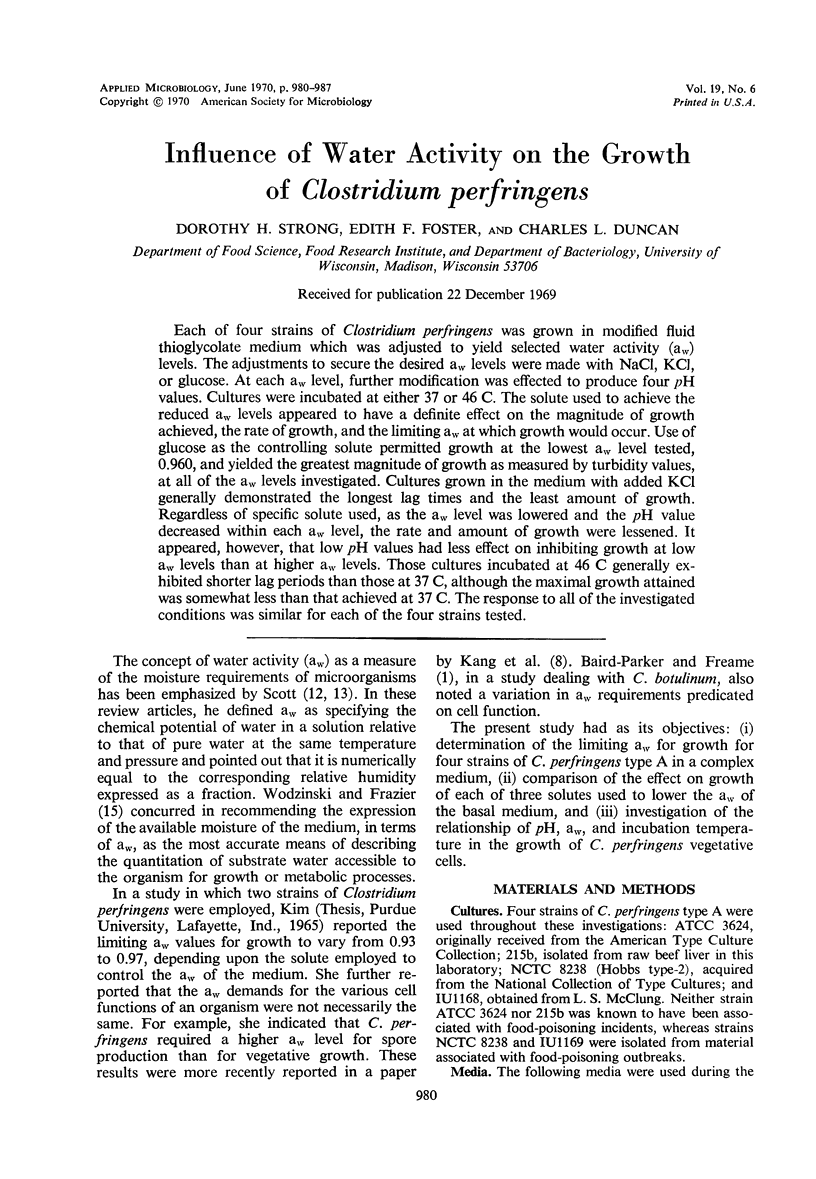
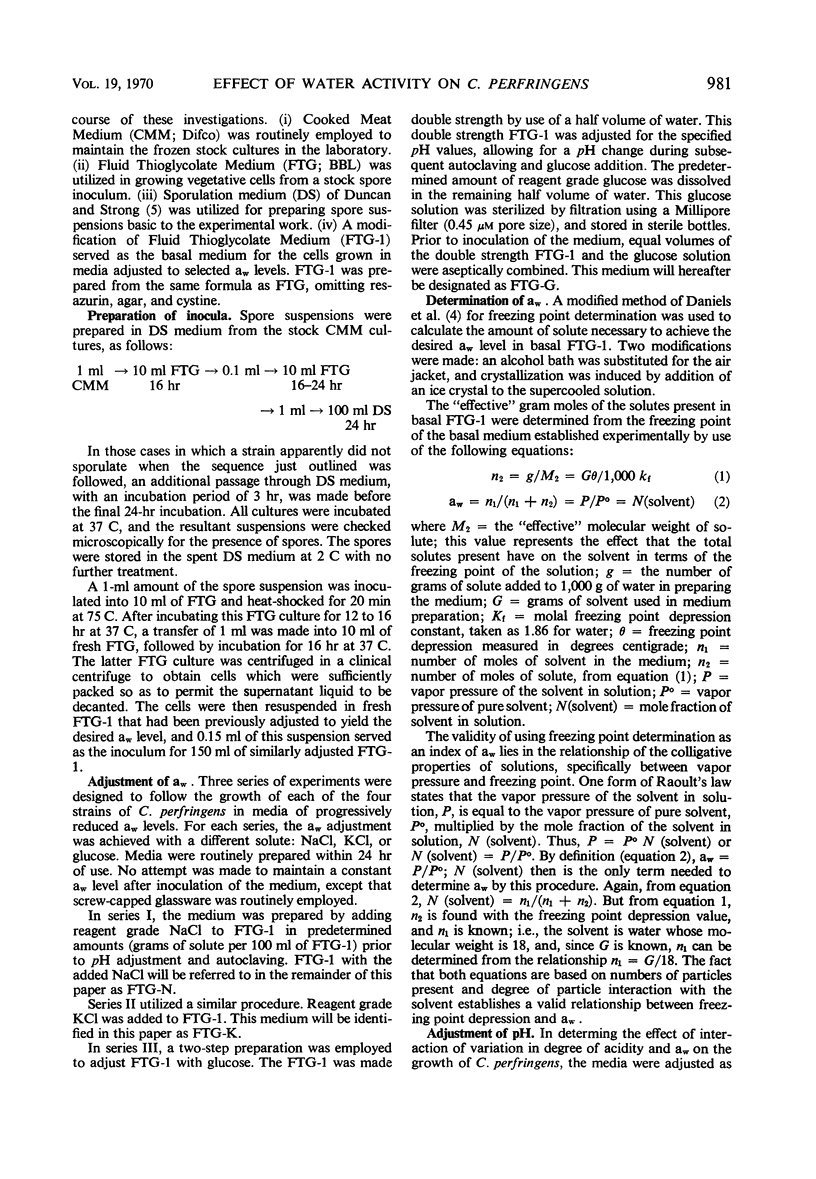
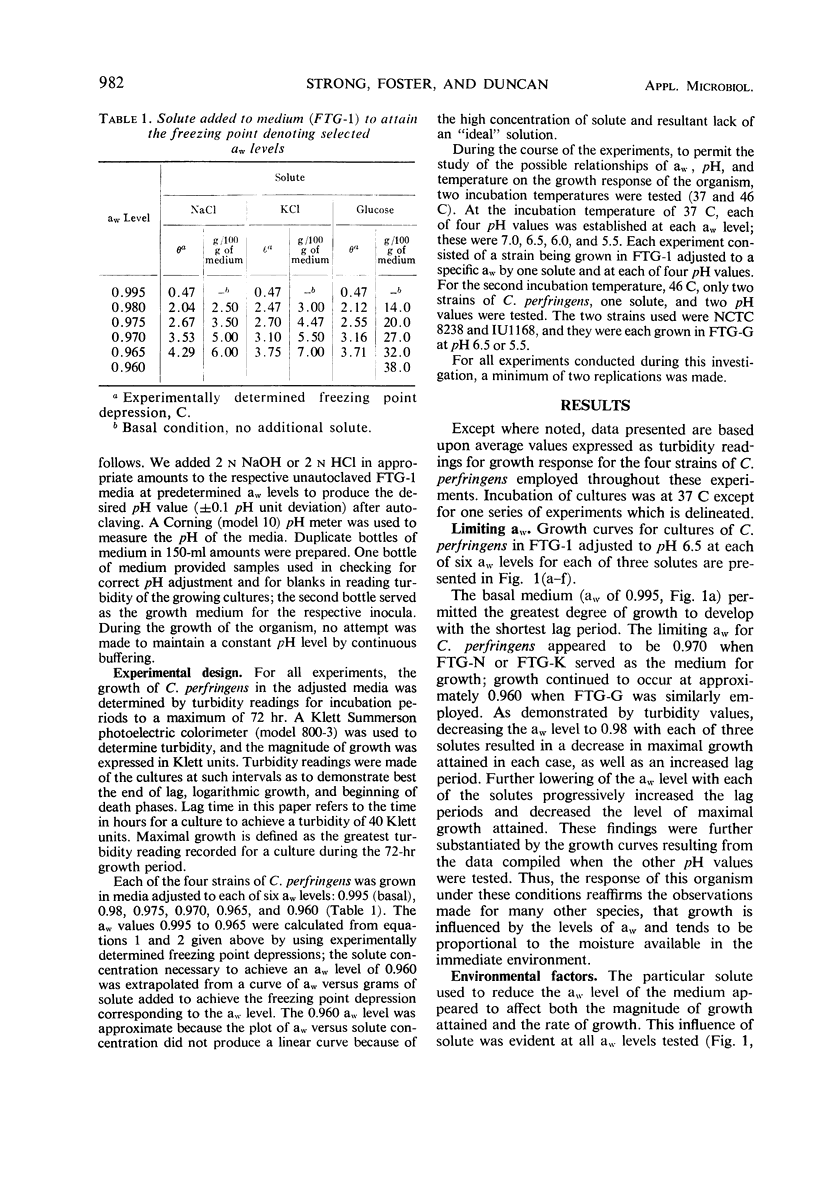
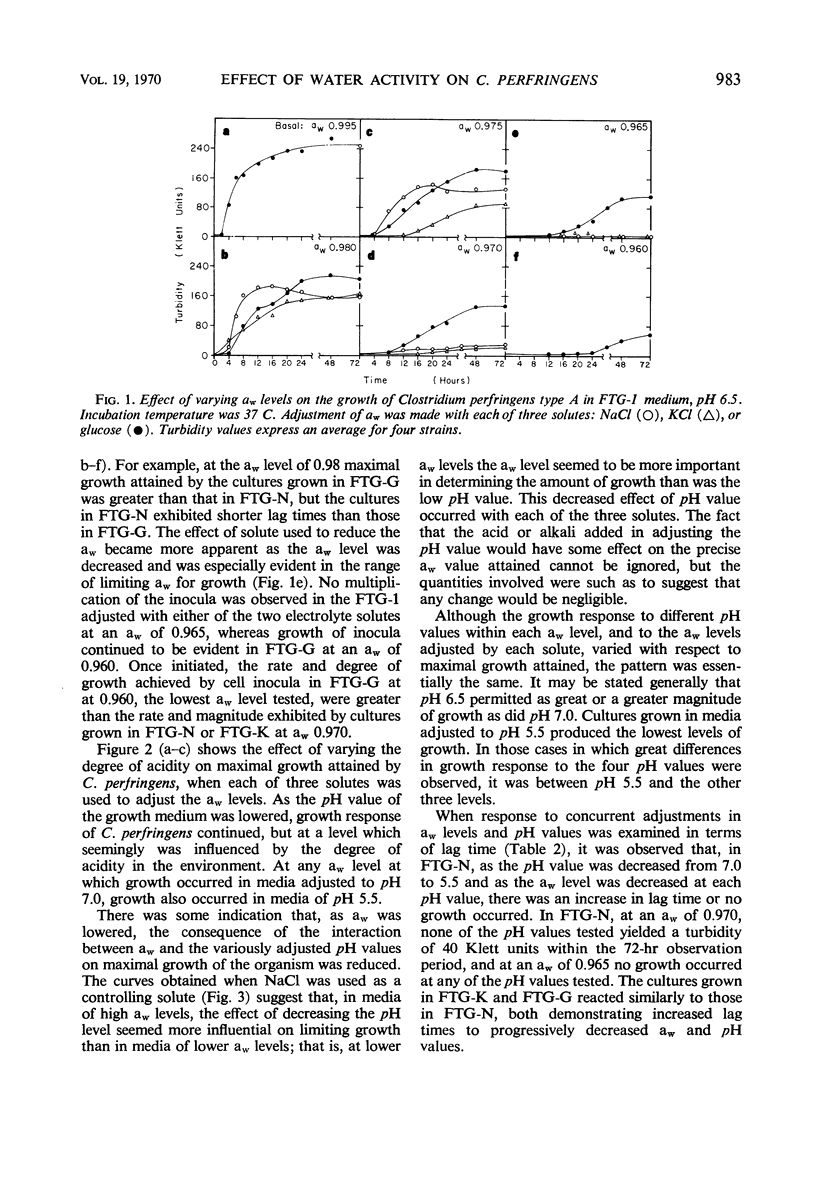
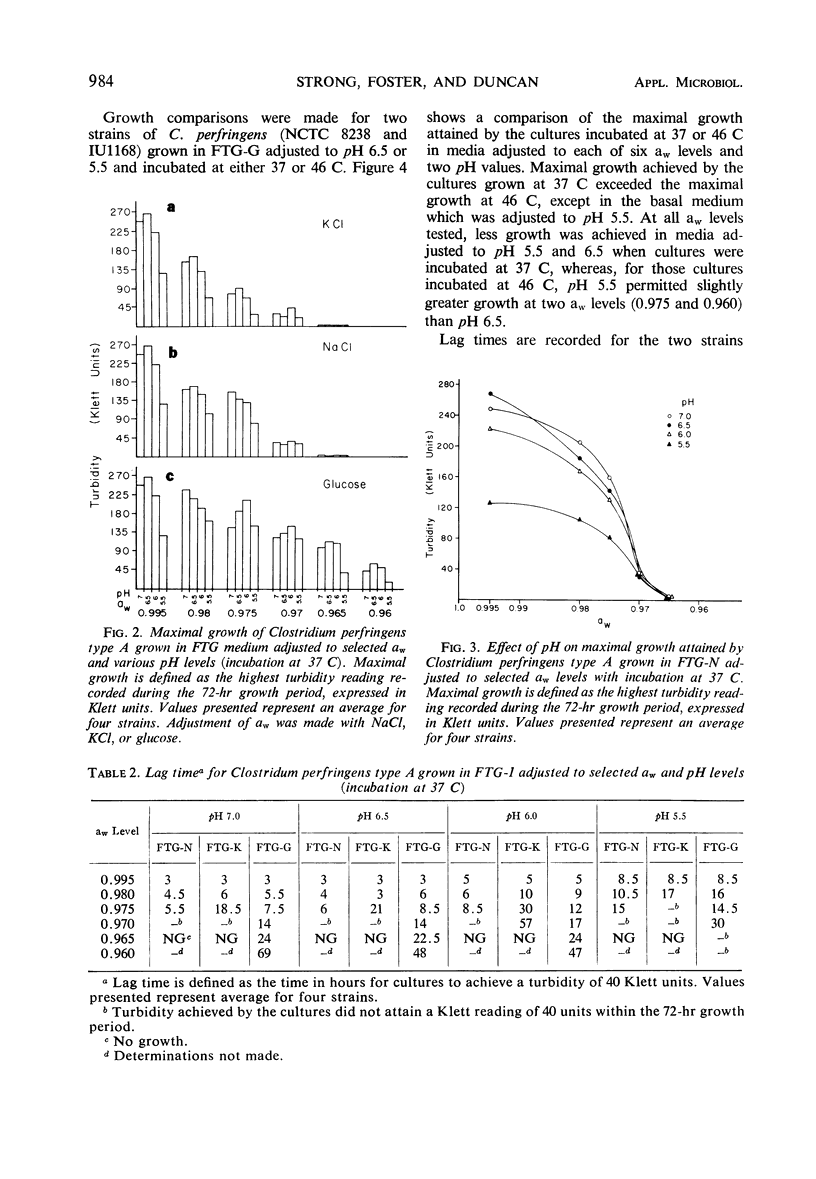
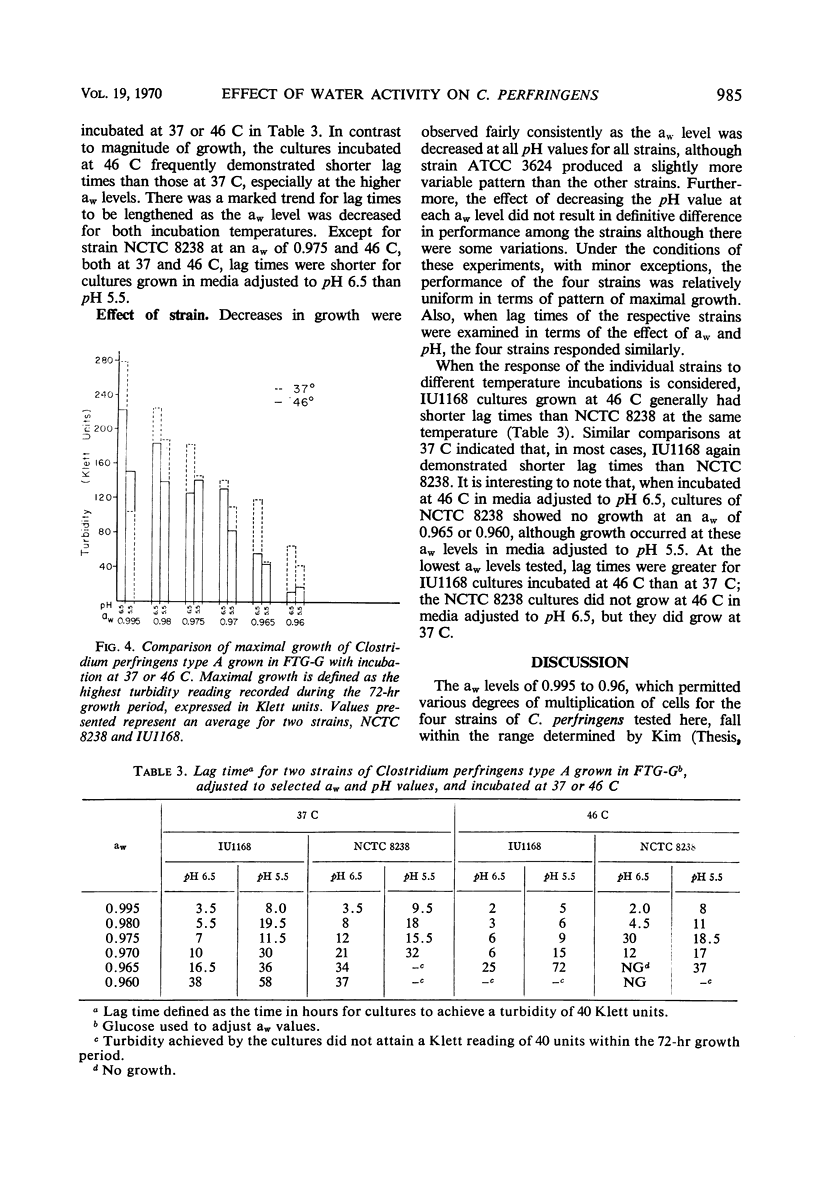
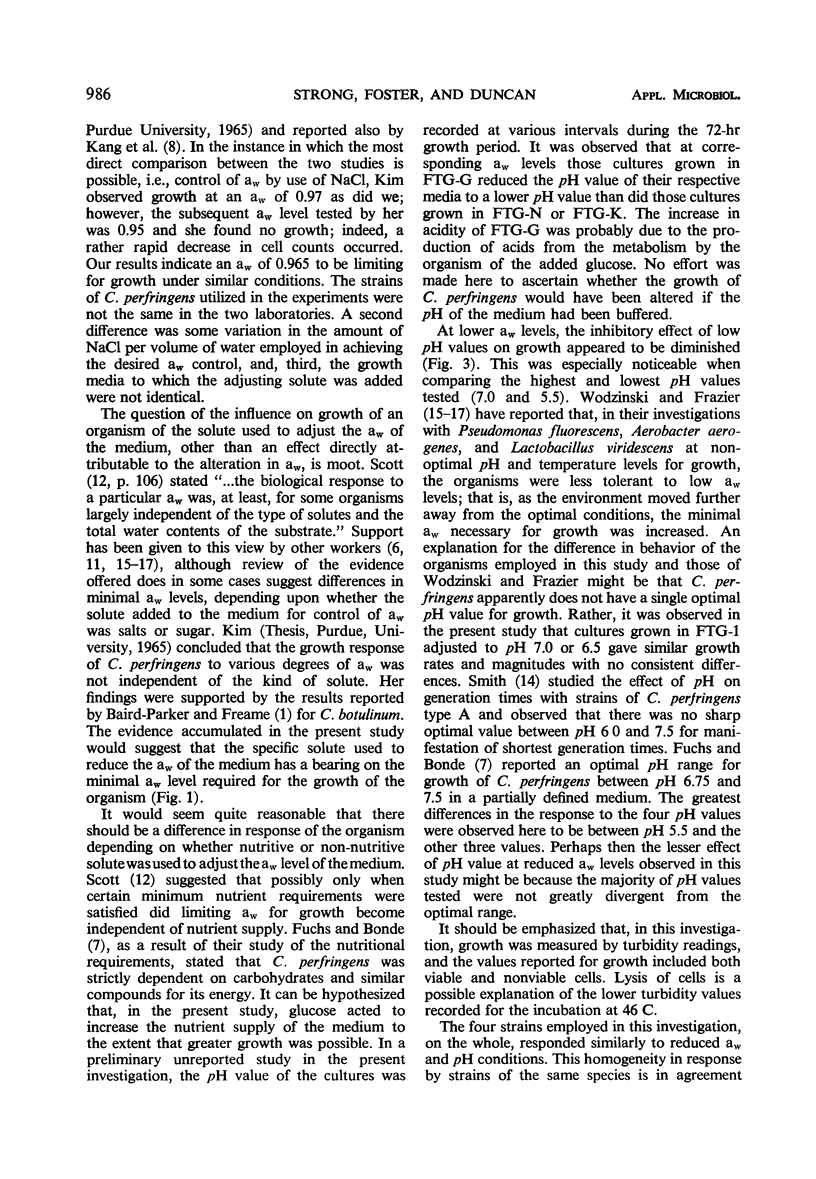
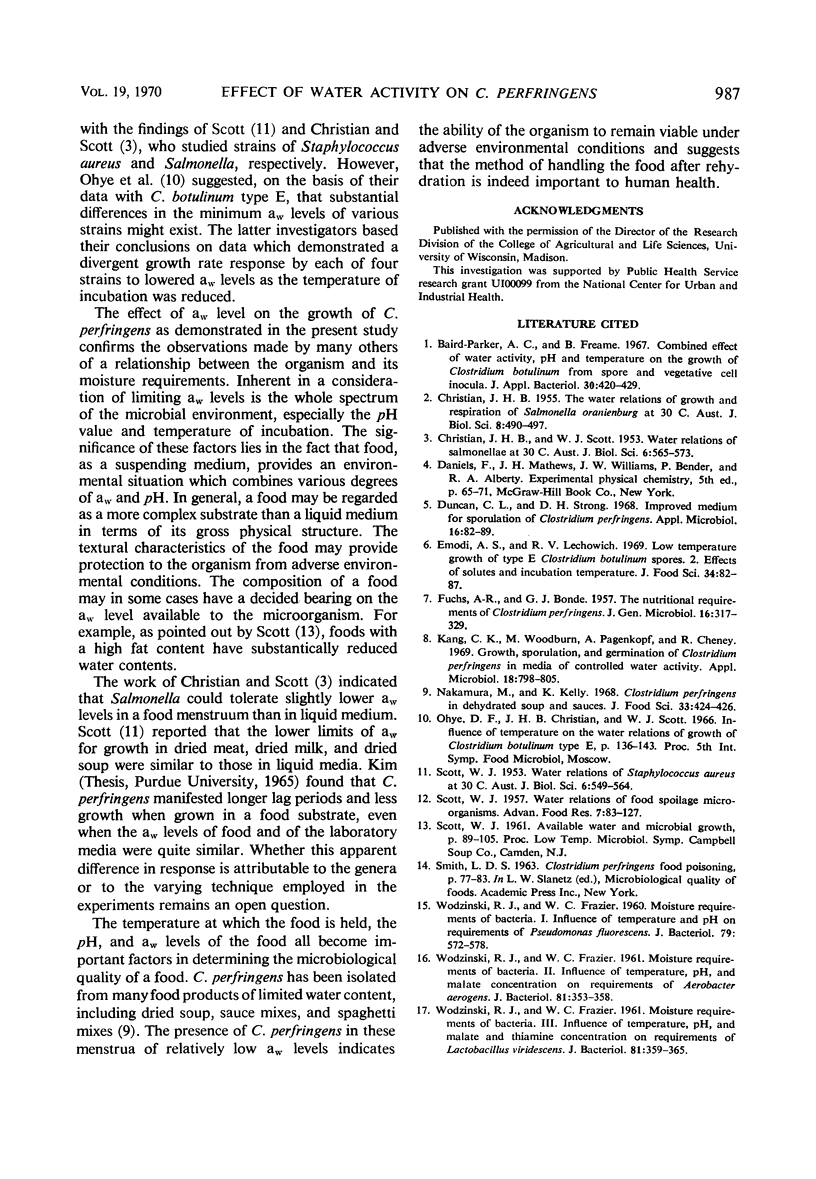
Selected References
These references are in PubMed. This may not be the complete list of references from this article.
- Baird-Parker A. C., Freame B. Combined effect of water activity, pH and temperature on the growth of Clostridium botulinum from spore and vegetative cell inocula. J Appl Bacteriol. 1967 Dec;30(3):420–429. doi: 10.1111/j.1365-2672.1967.tb00320.x. [DOI] [PubMed] [Google Scholar]
- CHRISTIAN J. H., SCOTT W. J. Water relations of Salmonellae at 30 degrees C. Aust J Biol Sci. 1953 Nov;6(4):565–573. [PubMed] [Google Scholar]
- Duncan C. L., Strong D. H. Improved medium for sporulation of Clostridium perfringens. Appl Microbiol. 1968 Jan;16(1):82–89. doi: 10.1128/am.16.1.82-89.1968. [DOI] [PMC free article] [PubMed] [Google Scholar]
- FUCHS A. R., BONDE G. J. The nutritional requirements of Clostridium perfringens. J Gen Microbiol. 1957 Apr;16(2):317–329. doi: 10.1099/00221287-16-2-317. [DOI] [PubMed] [Google Scholar]
- Kang C. K., Woodburn M., Pagenkopf A., Cheney R. Growth, sporulation, and germination of Clostridium perfringens in media of controlled water activity. Appl Microbiol. 1969 Nov;18(5):798–805. doi: 10.1128/am.18.5.798-805.1969. [DOI] [PMC free article] [PubMed] [Google Scholar]
- SCOTT W. J. Water relations of Staphylococcus aureus at 30 degrees C. Aust J Biol Sci. 1953 Nov;6(4):549–564. [PubMed] [Google Scholar]
- WODZINSKI R. J., FRAZIER W. C. Moisture requirements of bacteria. I. Influence of temperature and pH on requirements of Pseudomonas fluorescens. J Bacteriol. 1960 Apr;79:572–578. doi: 10.1128/jb.79.4.572-578.1960. [DOI] [PMC free article] [PubMed] [Google Scholar]
- WODZINSKI R. J., FRAZIER W. C. Moisture requirements of bacteria. II. Influence of temperature, pH, and malate concentration on requirements of Aerobacter aerogenes. J Bacteriol. 1961 Mar;81:353–358. doi: 10.1128/jb.81.3.353-358.1961. [DOI] [PMC free article] [PubMed] [Google Scholar]
- WODZINSKI R. J., FRAZIER W. C. Moisture requirements of bacteria. III. Influence of temperature, pH, and malate and thiamine concentration on requirements of Lactobacillus viridescens. J Bacteriol. 1961 Mar;81:359–365. doi: 10.1128/jb.81.3.359-365.1961. [DOI] [PMC free article] [PubMed] [Google Scholar]


